
DIY Prototyping Or Work With A Designer?
DIY Prototyping:
a. Cost-Effective Solutions: DIY prototyping can be budget-friendly, especially if you have the necessary tools and skills. You can use free or low-cost prototyping software and materials, reducing upfront expenses.
b. Hands-On Learning: Taking the DIY route allows you to gain valuable hands-on experience. It's an opportunity to deepen your understanding of the design process, from concept to creation.
c. Flexibility and Control: DIY prototyping offers complete control over the design process. You can make instant adjustments, experiment with ideas, and iterate quickly without external dependencies.
Working with a Designer:
a. Professional Expertise: Designers bring a knowledge base and experience to the table. They understand design principles, user experience, and industry trends, ensuring a polished and professional result.
b. Time Efficiency: Hiring a designer can expedite the prototyping process. Professionals are skilled at efficiently translating concepts into tangible designs, potentially saving you time, and allowing you to focus on other aspects of your project.
c. Access to Advanced Tools: Designers often have access to premium design tools and software, enhancing the quality and sophistication of their prototypes. This access can result in a more refined and polished final product.
Conclusion:
Choosing between DIY prototyping and working with a designer ultimately depends on your project requirements, budget constraints, and personal skills. While DIY offers cost savings and hands-on experience, a professional designer brings expertise and efficiency to the table. In some cases, a hybrid approach, combining your DIY efforts with occasional professional input, might be the ideal balance.
Remember, the key is to evaluate your project's unique needs and choose the approach that aligns with your goals. Whether you're a hands-on DIY enthusiast or seeking the finesse of a designer, the goal is to create a prototype that brings your vision to life effectively and efficiently.
Resource:
https://www.toptal.com/designers/prototyping/guide-to-prototype-design
https://www.interaction-design.org/literature/article/design-thinking-get-started-with-prototyping
https://www.theenglishwoodworker.com/prototyping-yay-or-nay/
Disclaimer: Wherever any material is quoted as sourced from the published text with publishing rights vested in an individual, it is stated that it is a pure quotation and has no intention to claim it as our own.
Image Source: www.freepik.com
204 adminDecember 19, 2023

Top Design Considerations To Keep In Mind While Designing Your Product
User-Centric Design: User experience (UX) is paramount. Ensure that your product is intuitive and easy to use. You must research your target audience, preferences, and pain points. Incorporate feedback loops to refine and enhance the user experience continually.
Functionality and Purpose: Clearly define your product's purpose and ensure its functionality aligns with this purpose. Avoid feature bloat – each design element should serve a specific, user-centric function. A focused product is often more successful than one trying to be everything to everyone.
Scalability and Future-Proofing: Design with the future in mind. Anticipate potential changes in technology, user behavior, or market trends. Build a scalable architecture that can accommodate growth and adapt to emerging technologies, ensuring your product remains relevant and competitive.
Aesthetic Appeal: Visual design is the first impression users have of your product. Invest in a visually appealing design that reflects your brand identity. Consistent color schemes, typography, and imagery create a cohesive and memorable brand image.
Accessibility and Inclusivity: Design your product to be accessible to users with diverse needs. Consider factors such as font size and navigational simplicity. Embrace inclusivity by ensuring your design accommodates users of different abilities, languages, and cultural backgrounds.
Performance and Speed: Users today expect quick and seamless experiences. Optimize your product's performance by minimizing load times and streamlining processes. A fast and responsive product improves user satisfaction and positively impacts search engine rankings.
Security and Privacy: In an era of increasing digital threats, prioritize the security and privacy of your users. Implement robust security measures, adhere to privacy regulations, and communicate transparently about data handling practices. Building trust with your users is integral to long-term success.
Cross-Platform Compatibility: With users accessing products on various devices, ensure cross-platform compatibility. Your design should seamlessly adapt to different screen sizes and resolutions. A responsive design enhances user experience and broadens your product's reach.
Feedback Mechanisms: Integrate feedback mechanisms into your design to collect user input. Whether through surveys, reviews, or in-app feedback forms, understanding user opinions helps you make informed design decisions and demonstrates a commitment to continuous improvement.
Sustainability: Consider the environmental impact of your product. Sustainable design practices contribute to a healthier planet and resonate with environmentally conscious consumers. Small steps can make a big difference from eco-friendly packaging to energy-efficient software.
Conclusion:
As you embark on the exciting journey of bringing your product to life, remember that successful design is a holistic process beyond aesthetics. By prioritizing user experience, functionality, scalability, and other vital considerations, you lay the foundation for a product that meets and exceeds user expectations, ensuring long-term success in the competitive marketplace.
Disclaimer: Wherever any material is quoted as sourced from the published text with publishing rights vested in an individual, it is stated that it is a pure quotation and has no intention to claim it as our own.
Image Source: www.freepik.com
192 adminDecember 13, 2023

AWS Stack
What is AWS?
Amazon Web Services (AWS) is an extensive cloud computing platform provided by Amazon. It offers vast services that cater to the different needs of businesses, from startups to enterprises. These services help you quickly build, deploy, and manage applications and infrastructure.
AWS Services for Cloud & Hosting:
Amazon EC2 (Elastic Compute Cloud): EC2 is AWS's virtual server offering, allowing you to run applications in the cloud. It offers scalability and flexibility, making it easy to adjust your server capacity as needed.
Amazon S3 (Simple Storage Service): S3 provides scalable object storage for your data. It's perfect for storing backups, multimedia content, and static web content. Plus, it integrates seamlessly with other AWS services.
Amazon RDS (Relational Database Service): RDS manages relational databases in the cloud, such as MySQL, PostgreSQL, and SQL Server. It automates routine tasks like patching, backups, and scaling.
Amazon Lambda: Lambda is AWS's serverless computing service. It lets you run code responding to events without provisioning or managing servers. Ideal for building event-driven applications.
Amazon CloudFront: CloudFront, this content delivery network (CDN), accelerates the delivery of your web content. It improves website performance by distributing content from edge locations.
Benefits of AWS Cloud & Hosting: AWS allows you to scale resources based on demand, ensuring optimal performance and cost savings. With data centers in multiple regions, AWS offers high availability and redundancy, minimizing downtime. AWS provides challenging security features and compliance certifications to protect your data. Pay only for the resources you use, with no upfront charges or long-term commitments. AWS has a vast global network, enabling you to reach customers worldwide.
Getting Started with AWS:
Sign Up: Create an AWS account to get started. AWS offers a free tier with limited resources to help you explore its services.
Select Services: Identify the AWS services that align with your business needs.
Tutorials and Documentation: AWS offers extensive documentation and tutorials to help you get started.
Support: Consider AWS support plans for expert assistance as you scale.
Conclusion:
Amazon Web Services (AWS) simplifies cloud hosting for businesses, offering services designed to meet various needs. Its scalability, reliability, security, and cost-effectiveness make it a top choice for companies worldwide. By understanding the basics of AWS, you can utilize the power of the cloud to drive innovation and growth in your organization.
Embrace the AWS stack and take your business to new heights in the digital era. AWS provides the foundation for success in an increasingly cloud-centric world.
Remember, AWS offers a free tier to help you get started, so there's no reason not to explore the endless possibilities of cloud and hosting with AWS today.
Resource:
https://aws.amazon.com/websites/
https://aws.amazon.com/application-hosting/
https://docs.aws.amazon.com/AWSCloudFormation/latest/UserGuide/Welcome.html
Disclaimer: Wherever any material is quoted as sourced from the published text with publishing rights vested in an individual, it is stated that it is a pure quotation and has no intention to claim it as our own.
Image Source: www.freepik.com
195 adminSeptember 26, 2023

What Works In Lead Gen In Chicagoland
1. Localized SEO for Chicagoland: Enhance your online presence by leveraging local SEO techniques. Optimize your website and content with relevant Chicagoland keywords to attract potential leads. Incorporate location-based keywords like "Chicago," "Chicagoland," and specific neighborhood names to improve your search engine rankings and increase visibility among local prospects.
2. High-Quality Content Creation: Create compelling and educative content that resonates with your Chicagoland audience. One must craft blog posts, articles, and videos that address the unique needs and difficulties of businesses in the region. Share valuable insights, industry trends, and local success stories to position your brand as an authoritative source and attract potential leads seeking relevant information.
3. Networking Events and Workshops: Participate in or host networking events and workshops within Chicagoland. These events provide good opportunities to connect with local businesses and professionals, fostering relationships that can lead to valuable referrals and partnerships. Promote these events on your website and social media channels to generate interest and gather leads.
4. Social Media Engagement: Engage actively on social media platforms popular within the Chicagoland area. Share content highlighting your business's involvement in the local community, such as sponsoring events, supporting local causes, or collaborating with other businesses. Use location-based hashtags to increase the visibility of your posts among potential leads in the region.
5. Email Marketing Campaigns: Develop targeted email marketing campaigns tailored for the Chicagoland market. Bifurcate your email list based on factors such as location and industry, and send personalized content that addresses specific challenges or interests of local leads. Offer exclusive promotions or insights to incentivize sign-ups and conversions.
6. Collaborations with Local Influencers:
Identify and collaborate with important figures in the Chicagoland area. These influencers could be bloggers, social media personalities, or industry experts with a significant local following. Partnering with them for co-created content or promotional campaigns can help you tap into their circle of audience and generate leads that align with your target market.
7. Google My Business Optimization:
Claim and optimize your Google My Business (GMB) listing to enhance your range of vision in local search results. Ensure your GMB profile includes accurate business information, high-quality images, customer reviews, and product or service updates. Positive reviews from satisfied Chicagoland customers can boost your credibility and attract more leads.
Navigating the lead generation landscape in Chicagoland requires a strategic approach that aligns with the local market's unique characteristics. By implementing these SEO-friendly techniques and tailoring your efforts to the Chicagoland area, you can position your business as a prominent player and consistently generate quality leads for sustained growth and success.
Resource:
https://blog.hubspot.com/marketing/local-lead-generation#:~:text=Some%20examples%20of%20lead%20generators,%2Dclick%20(PPC)%20ads.
https://www.searchenginejournal.com/lead-generation-how-to-get-started/476790/
Disclaimer: Wherever any material is quoted as sourced from the published text with publishing rights vested in an individual, it is stated that it is a pure quotation and has no intention to claim it as our own.
Image Source: www.freepik.com
196 adminSeptember 7, 2023

What Does Not Work In Lead Gen In Chicagoland
1. Neglecting Local SEO: Local search engine optimization (SEO) is essential in a competitive market like Chicagoland. You must optimize your website and virtual presence for local keywords to ensure you get all the potential leads. Incorporate location-specific keywords, meta descriptions, and titles in your web content to improve your local search visibility.
2. Ignoring Target Audience Research: With a clear understanding of your target audience in the Chicagoland area, your lead-generation efforts might stay strong. Conduct thorough research to identify your local audience's demographics, preferences, and pain points. This information will help tailor your marketing communications effectively.
3. Overlooking Social Media Engagement: Social media platforms offer a powerful path for lead generation. Ignoring social media or using it ineffectively can hinder your success. Regularly post engaging content, interact with followers, and use location-specific hashtags to increase your brand's visibility in the Chicagoland community.
4. Poorly Designed Landing Pages: Your landing pages play an essential role in converting visitors into leads. Visitors will likely bounce off if your landing pages are more precise, explicit, or faster. Create clean, user-friendly landing pages that communicate the value of your offering and encourage visitors to take action.
5. Not Utilizing Content Marketing: Content marketing establishes your expertise and attracts potential leads. Failing to provide valuable content related to your industry in Chicagoland can hinder your lead-generation efforts. Create blog posts, videos, and guides that address local challenges and showcase your solutions.
6. Lack of Clear Call-to-Action (CTA): With a clear and compelling call to action, visitors may know what steps to take next. Whether signing up for a newsletter or scheduling a consultation, make sure your CTAs stand out and guide visitors toward becoming leads.
7. Disregarding Follow-Up: Effective lead generation continues once a lead is captured. Neglecting follow-up can cause potential leads to lose interest. Implement a structured follow-up strategy, such as automated emails or personalized outreach, to nurture leads and guide them through the sales funnel.
8. Not Monitoring and Analyzing Results: Lead generation strategies need constant monitoring and optimization. You need to analyze the performance of your campaigns to know what's working and what's not. Use tools to track metrics and adjust your strategies accordingly.
Conclusion:
Lead generation in the Chicagoland area requires a strategic approach considering local nuances and preferences. By avoiding these common faults and implementing effective strategies, businesses can create successful lead-generation campaigns that drive growth and engagement within the Chicagoland community. Remember, a well-rounded approach that combines local SEO, audience research, engaging content, and a vital follow-up process can make all the difference in lead generation success.
Resource:
https://www.yokellocal.com/blog/reasons-why-your-lead-generation-strategy-isnt-working
https://www.fool.com/the-ascent/small-business/crm/articles/local-lead-generation/
https://marketinginsidergroup.com/content-marketing/5-reasons-lead-generation-strategy-not-working/
Disclaimer: Wherever any material is quoted as sourced from the published text with publishing rights vested in an individual, it is stated that it is a pure quotation and has no intention to claim it as our own.
Image Source: www.freepik.com
202 adminSeptember 6, 2023
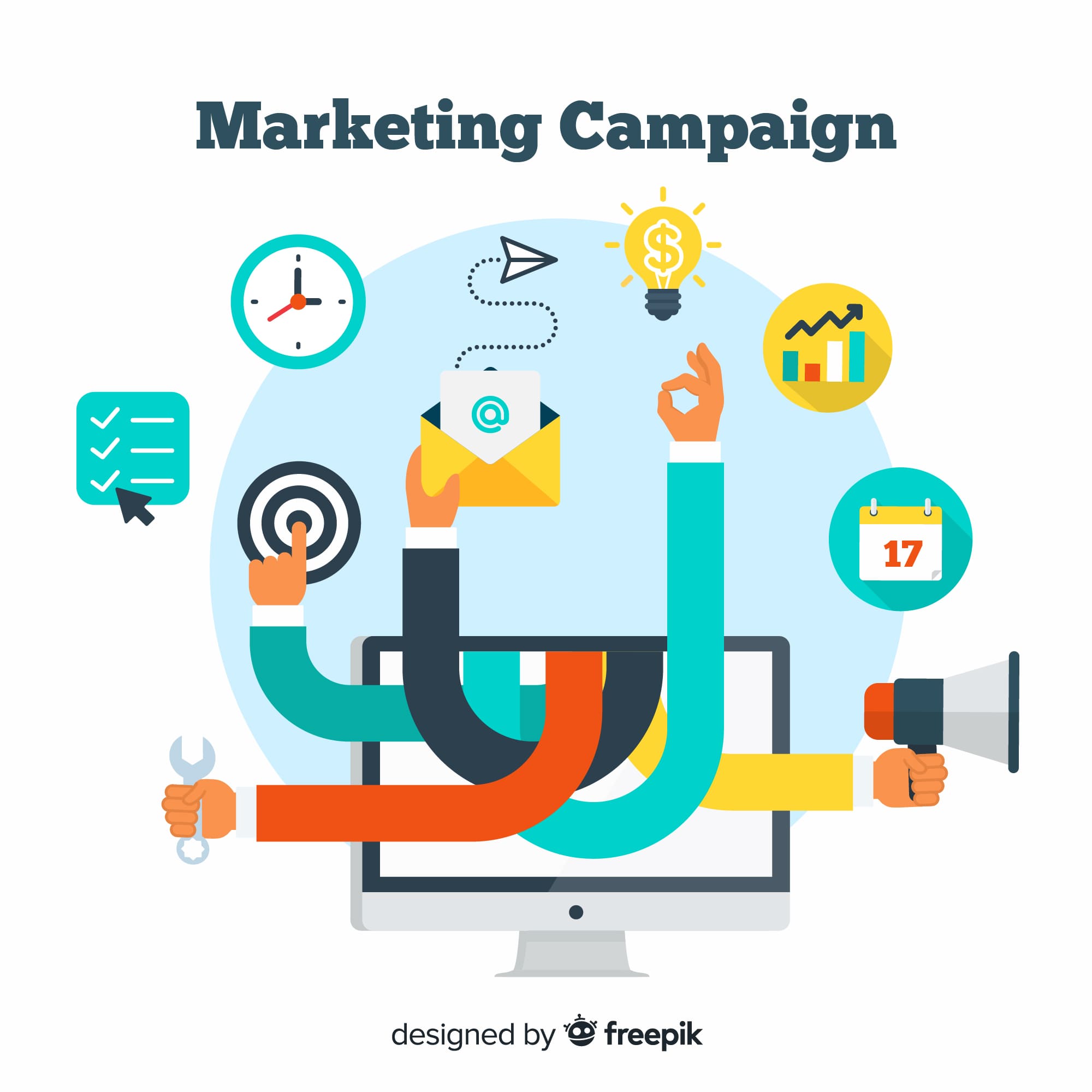
The Long Tail Of Good Companies
The long tail is a business strategy that focuses on selling low volumes of hard-to-find items to many customers. This approach, coined by Chris Anderson in 2004, suggests that the collective market share of niche products can rival or exceed that of popular bestsellers. Companies like Amazon and Netflix have successfully implemented long-tail marketing, leveraging the benefits of reduced costs, extensive product variety, and data intelligence. In addition to e-commerce, microfinance companies have embraced this strategy, catering to underserved markets and driving economic growth in various regions.
Benefits of Long Tail to Your Business:
Lower Costs:
The extended tail model significantly reduces storage, distribution, and marketing expenses. With centralized warehouses and online platforms, companies like Amazon and Netflix can offer a wide range of products without the limitations of physical retail space. For digital products, such as e-books or music, the costs associated with storage are virtually eliminated. Moreover, targeted online marketing enables businesses to reach the right audience efficiently.
Massive Crowd Contribution:
By harnessing the collective input of users, companies can build vast databases of content and recommendations. Platforms like Google leverage user-generated content to provide relevant search results. This crowd contribution enhances the discoverability of niche products, catering to consumers' specific needs and preferences.
Data Intelligence:
Long-tail businesses employ recommendation engines and customer data to personalize product offerings. Companies can understand individual preferences through deep customer intelligence and tailor recommendations accordingly.
This approach fosters customer satisfaction and loyalty while also driving product development. Manufacturers and producers can create niche products catering to specific target groups, expanding their market reach.
Market Share Expansion:
The rise of long-tail products has reshaped the economy, with blockbuster items accounting for less than half of total sales. This shift signifies the growing market share of niche products. Companies can tap into various customer segments by offering diverse products and capturing untapped market potential.
Implementing a long-tail marketing strategy can bring significant benefits to businesses. Embracing the long tail enables companies to thrive in an increasingly diverse and digitally connected marketplace.
Resource:
https://www.startechup.com/blog/long-tail/
https://www.investopedia.com/terms/l/long-tail.asp#:~:text=Key%20Takeaways-,The%20long%20tail%20is%20a%20business%20strategy%20that%20allows%20companies,2004%20by%20researcher%20Chris%20Anderson
Disclaimer: Wherever any material is quoted as sourced from the published text with publishing rights vested in an individual, it is stated that it is a pure quotation and has no intention to claim it as our own.
Image Source: www.freepik.com
186 adminAugust 30, 2023

What VCs Want
Venture capitalists fund young and innovative businesses and partner with experienced professionals and experts with proven ability to develop and grow businesses.
What venture capital VCs firms want in an investment opportunity?
Venture capitalists consider several factors when evaluating a business for potential investment:
Leadership: VCs look for inspiring and committed founders who can effectively communicate, handle pressure, problem-solve, and adapt. They should be passionate and knowledgeable about their product/service and industry.
Strong Team: VCs invest in people, so they want to see a dedicated team that shares the founder's vision, possesses relevant skills, and can overcome challenges as the business grows.
Clean Cap Table: VCs prefer a limited number of accredited investors on the cap table, as too many small investors can create complications and conflicts during later funding rounds.
Innovative Product: VCs seek businesses with unique or compelling products/services that offer strong differentiation and an apparent reason for customers to choose them over competitors.
Proof of Concept: VCs want evidence that the business has a viable market and customers willing to pay for the product/service.
Considerable Market Potential: A significant market size is attractive to VCs, as they want to invest in businesses with the potential for substantial growth and revenue.
Conversion Proof: VCs look for businesses that can effectively convert prospects into paying customers, preferably with a straightforward conversion process.
Reasonable Cash Burn Rate: VCs assess the company's cash burn rate and runway to understand its financial stability and how long it can operate before running out of funds.
Detailed Capital Utilization Plan: VCs expect a clear plan for how the investment capital will fuel business growth and generate returns.
Favorable Terms: VCs consider deal structures and terms, such as pro-rata rights and liquidation preferences, seeking terms that align with their investment strategy.
10X Potential: VCs aim for significant returns on their investments and seek businesses with the potential for exponential growth or a substantial exit multiple.
Investment Thesis Fit: VCs prefer businesses that align with their investment philosophy, industry expertise, and portfolio, allowing them to provide strategic value and mentorship.
These factors help venture capitalists evaluate the potential of a business and make investment decisions. However, it is also important to remember that every VC firm differs.
Some companies may be more flexible than others regarding what they are willing to accept in return for their investment. So, research and pitch your business to the right company to increase your chances of getting funded.
Resource:
https://preferredcfo.com/12-things-venture-capitalists-look-for/
https://fullscale.io/blog/what-venture-capital-firms-want/
Disclaimer: Wherever any material is quoted as sourced from the published text with publishing rights vested in an individual, it is stated that it is a pure quotation and has no intention to claim it as our own.
Image Source: www.freepik.com
191 adminAugust 23, 2023

EC2 and S3
What is Amazon EC2?
EC2 is a flexible and scalable computing capacity service offered in the AWS cloud. By using Amazon EC2, you no longer need to invest in upfront hardware, allowing for faster app development. Additionally, you can launch a virtual server.
Meet your needs
Manage storage
Configure security and networking
This service allows for easy scaling up or down to meet changes in demand or popularity, reducing the need for traffic forecasting.
What Is Amazon S3?
AWS S3 is a top-tier object storage service with exceptional scalability, data protection, security, and speed. Users of different sectors and sizes can store and secure their data for various applications such as data lakes, websites, mobile apps, backups, archives, IoT devices, and big data analytics. It has management features let you customize, manage, and regulate data access to meet your company's needs, organizational goals, and regulatory standards.
Comparing Amazon S3 and EC2: Similarities and Differences
Unlock unparalleled cloud efficiency by seamlessly integrating Amazon EC2 and Amazon S3. Amazon EC2 empowers your applications with dynamic cloud-based servers, while Amazon S3 revolutionizes data storage. Elevate your operations with this winning duo:
Amazon EC2, a renowned solution for cloud applications, thrives when paired with Amazon S3. Securely store static data, such as website hosting assets, for seamless application functioning.
Enhance data security by designating Amazon S3 buckets as backup destinations for Amazon EC2 data.
Effortlessly exchange data between EC2 instances or bridge the gap between the cloud and local infrastructure using Amazon S3 buckets.
Supercharge your cloud experience with the ultimate synergy of Amazon EC2 and Amazon S3!
Conclusion:
EC2 and S3 are different types of services. One allows you to run a server in the cloud with minimal effort, while the other is designed to store large amounts of static data and is ideal for data backup. Yet despite these differences, Amazon EC2 and Amazon S3 complement each other in significant ways, and you'll often find them used together.
Resource:
https://www.whizlabs.com/blog/amazon-ec2-vs-amazon-s3-comparison-guide/
https://www.msp360.com/resources/blog/amazon-ec2-vs-amazon-s3/
Disclaimer: Wherever any material is quoted as sourced from the published text with publishing rights vested in an individual, it is stated that it is a pure quotation and has no intention to claim it as our own.
Image Source: www.freepik.com
196 adminAugust 22, 2023
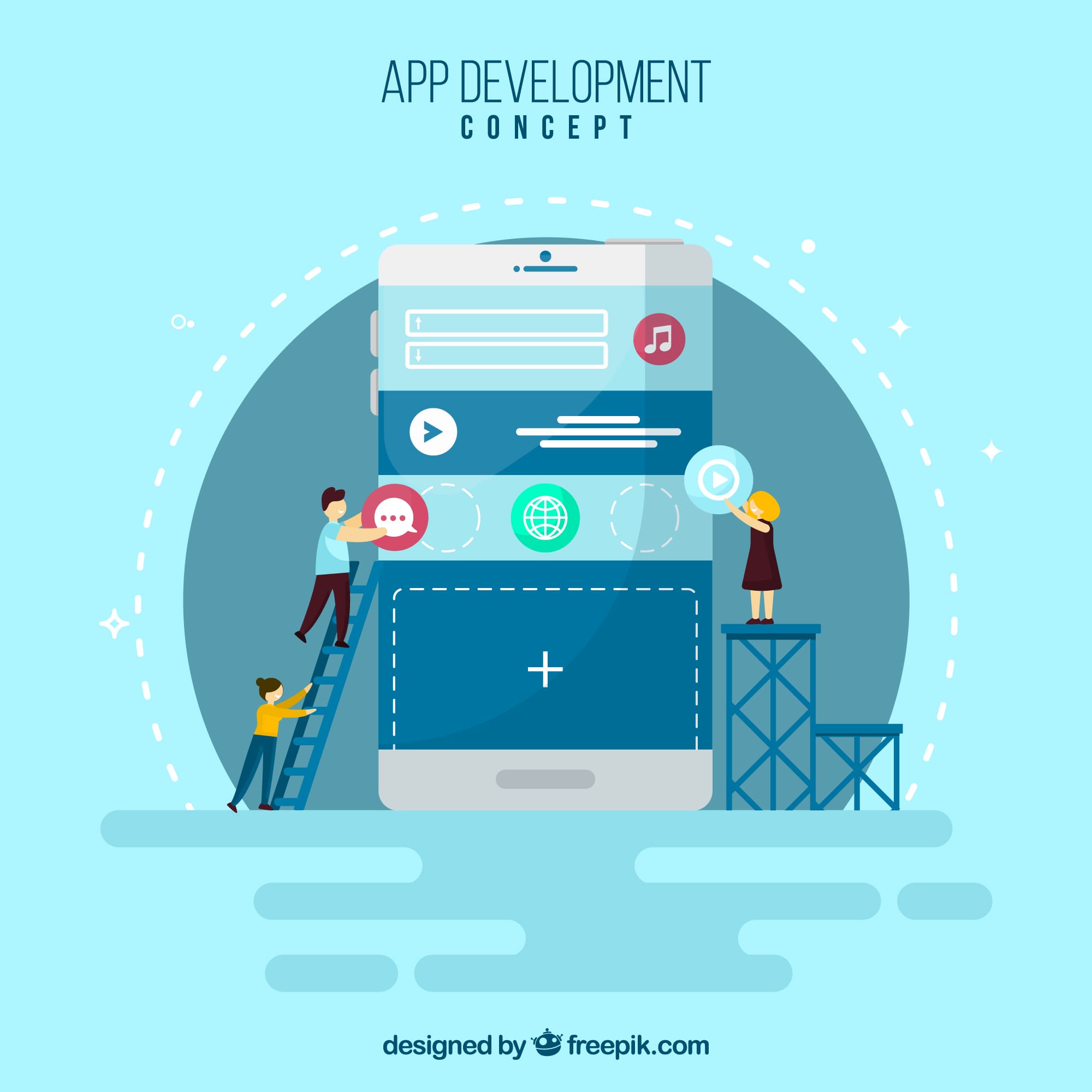
From Design To Development
A designer's work is a craft that requires skills that must be constantly sharpened. Below is an excellent step-by-step example of the design development process.
Step 1. Discuss with the customer before starting the design and development process: The first step of the entire design process starts with the customer. Discuss all the necessary details with them to better understand the purpose of the project, the audience it serves, the problems it can solve, and the client's overall vision.
Step 2. Do The Research: After talking to customers,
1. Start researching.
2. Look for specific details about the product to study the market and project's target audience and competitors.
3. Once the research is done, discuss it with the customer, get their feedback, and estimate the time required for the development.
Step 3. Wireframe Design Process: If the client gives the project concept a "go," the next step is to create a wireframe. Wireframes are interactive schematic pages of a site or application's screen, like a blueprint.
Wireframe development can only be done with constant feedback and interaction with customers. Give suitable examples of what we want to do, get customer feedback, make changes, and get feedback again. This iteration is repeated until all the project details are well thought out, executed, and approved by the client.
Step 4. Determining The Design Development Process: The design development process involves the following:
1. Wireframing.
2. Creating a conceptual logo.
3. Designing the homepage or initial screens based on the wireframes and mood board.
Feedback from the customer is collected and incorporated into the design. Once the homepage is approved, work begins designing the internal pages, considering various interface elements and details. After the internal pages are approved, the design is customized for mobile devices and tablets, ensuring a professional and user-friendly experience across different devices.
Step 5. Preparing Resources For Post-Launch: During the final stages of product design, the team prepares resources for post-launch, including adjusting icons, pictures, colors, and font sizes to fit the platform. For web projects, provide a mock-up with color palettes, fonts, and vector icons to ensure easy future development. The designer no longer communicates with the customer at this stage but provides this documentation if further development is required.
Step 6. Enjoy the final product after the design and development stages:
After all the hard work, the final product is launched after you go through the six steps of the design process, and customers can enjoy the festivities!
Resource:
https://steelkiwi.com/blog/design-development-process-6-steps/
https://www.artscapediy.org/creative-placemaking-toolbox/how-do-i-approach-the-design-development-process/
https://gillilandcm.com/2019/04/30/the-design-development-phase/
Disclaimer: Wherever any material is quoted as sourced from the published text with publishing rights vested in an individual, it is stated that it is a pure quotation and has no intention to claim it as our own.
Image Source: www.freepik.com
206 adminJuly 3, 2023

Ideas Are Dime A Dozen, It’s The Execution Which Matters
According to Forbes magazine, nine out of every ten startups fail. There can be many reasons for this, so let's try to understand the most critical factors in startup success.
First, let us understand that we are talking about startups launched after detailed evaluation and planning; venture capitalists invested in them, so of course, they did their due diligence, but most importantly, they had a viable and, in some cases, extraordinary idea. So, what happened then?
Yes, of course, the execution was supposed to be the idea; what is execution?
Execution means many things to many people; Knowing your people and your business, knowing your priorities, setting clear goals, following through on them, nurturing talent, always being ready to expect the unexpected, and always re-adapting.
In short, staying on top of your business, monitoring every aspect of performance, asking questions, and, more importantly, seeking answers wherever possible.
Many successful businesses did not have original ideas, but they executed them better than anyone else. You may have heard of Mark Zuckerberg stealing the idea for Facebook from his Harvard friends, but how many know or remember Friendster? It was there even before Myspace.
Microsoft Windows was an idea that came from an operating system called OS/2. Microsoft created OS/2 for IBM in collaboration with IBM, but they developed a similar operating system named Windows.
These are some examples that show that the execution of your idea and its business plan is more important. So, no matter how good your idea is, hard work and persistence will win you the market.
Resource:
https://www.linkedin.com/pulse/ideas-dime-dozen-focus-execution-adnan-siddiqui
https://www.forbes.com/sites/amyanderson/2013/03/14/ideas-are-a-dime-a-dozen-people-who-implement-them-are-priceless/?sh=53ae245c593e
Disclaimer: Wherever any material is quoted as sourced from the published text with publishing rights vested in an individual, it is stated that it is a pure quotation and has no intention to claim it as our own.
Image Source: www.freepik.com
206 adminJune 30, 2023

Building A Founding Team
Trust - The Cornerstone of a Founding Team
Weathering the Storms Together: Startups face numerous challenges, and the emotional and financial rollercoaster can be overwhelming. Trust among founders allows for mutual support during both good and bad times.
Toxicity and Doubt: Lack of trust can harm a business, leading to constant second-guessing and hindering progress. Case study: Tim and Peter's startup struggled due to a lack of trust, leading to a year-long argument about the product. Eventually, Peter left, and Tim guided the company to a successful exit.
Alignment on Priorities and Outcomes
Diverse Backgrounds, Divergent Visions: Founders often have different personalities, backgrounds, and financial situations, leading to conflicting views on what constitutes success.
Being on the Same Page: Founders should strive for alignment on their business goals, exit strategies, and vision for the company's future.
Covering All Bases - Essential Skills
Identifying Critical Functions: Each startup requires vital skills, such as technology, product development, and business acumen.
Filling Skill Gaps: Founding teams should ensure coverage for all critical skills. If a skill set needs to be added, they should prioritize finding a trustworthy individual or developing the necessary skills themselves.
Equity Sharing - Balancing Ownership
The Thorny Topic of Equity Split: Equity distribution can be contentious. Some advocate for an equal split, while others argue for the experience or financial investment-based allocation.
Equal Equity Split at the Start: An equal equity split encourages a collaborative and aligned approach among founders. Dissimilar equity distribution often indicates deeper issues within the team that need addressing.
Building a successful tech startup requires a strong and cohesive founding team. You can increase your startup's chances of success by prioritizing trust, aligning priorities and outcomes, covering all essential skills, and establishing equitable equity sharing. Building a founding team should be approached with the same seriousness as choosing a life partner. Take the time to cultivate a team that shares your vision, complements your skills, and supports one another through the ups and downs of entrepreneurship.
Resource:
https://www.forbes.com/sites/forbestechcouncil/2018/01/29/building-a-founding-team/?sh=79f61a537ebb
Disclaimer: Wherever any material is quoted as sourced from the published text with publishing rights vested in an individual, it is stated that it is a pure quotation and has no intention to claim it as our own.
Image Source: www.freepik.com
160 adminJune 29, 2023

When Should You Begin Looking For Funding?
The Benefits of Seeking Funding for Your Startup
1. Access to Resources: You can access the resources required to kickstart your business by seeking funding. This includes hiring staff, purchasing equipment, and marketing your product or service. Adequate funding can provide the necessary resources to take your business to the next level.
2. Improved Cash Flow: Having sufficient cash flow is crucial for the success of any business. Seeking funding can improve your cash flow, allowing you to invest in new resources and grow your business. This can help you navigate challenging times and avoid financial pitfalls.
3. Increased Networking Opportunities: Seeking funding opens doors to a broader network of potential investors and partners. This expands your opportunities and allows you to create relationships with individuals who can help develop your business further.
4. Validation: When investors are willing to invest in your business, it signifies their belief in your vision and product. This validation can boost morale and motivate you and your team to keep pushing forward.
5. Ability to Compete: Access to capital enables you to compete with larger businesses in your industry. With adequate funding, you can invest in better technology, hire more employees, and provide superior services to competitors with limited resources.
Identifying the Right Time to Seek Funding for Your Startup
1. Evaluate Your Financial Situation: Assess your current financial position, including savings and available funds. Consider your short-term and long-term goals to determine if seeking funding is necessary.
2. Determine the Type of Funding Needed: Understand the different types of funding available, such as bank loans, venture capital, angel investors, crowdfunding, or government grants. Research each option to identify the one that aligns with your requirements.
3. Assess Market Conditions: Evaluate the current market for investors and lenders. Determine if it's a favorable time to seek funding and understand the terms offered by potential funders in your industry.
4. Assess Business Readiness: Ensure you have a solid business plan and thoroughly researched potential competitors. Assess your ability to manage additional resources that come with obtaining funding.
5. Consider Opportunity Costs: Evaluate the benefits and drawbacks of seeking funding. Determine if additional capital will help you scale faster or enter new markets and weigh it against alternative investment options.
Factors to Consider Before Seeking Funding for Your Startup
1. Capital Requirement and Purpose: Determine the funding you need and clarify the purpose for which the funds will be used. This will help you choose the most suitable funding option.
2. Familiarize Yourself with Funding Options: Research and understand the different funding sources available, such as traditional financing options, venture capital, angel investors, crowdfunding, and government grants. Each option has its advantages and disadvantages.
3. Develop a Comprehensive Business Plan: Create a detailed business plan that sets your goals, objectives, milestones, and budget. This will demonstrate to potential investors how their funds will be utilized and show the viability of your business in the long run.
4. Ownership Considerations: Consider how different funding options may affect your ownership stake in the business. Debt financing may require giving up equity, while equity financing may involve sharing control of your company.
5. Due Diligence on Investors or Lenders: Conduct thorough due diligence on potential investors or lenders to ensure alignment with company goals and values. Look into their track record and experience investing in startups or business lending.
Conclusion:
Determining the right time to seek funding for your startup requires careful evaluation of your financial situation, funding options, market conditions, business readiness, and opportunity costs. By considering these factors, you can make an intelligent decision that maximizes your chances of success. Securing funding is a significant step, and proper timing and preparation can fuel your business's growth and development.
Resource:
https://blog.hubspot.com/sales/how-startup-funding-works
https://fastercapital.com/content/When-is-the-right-time-to-seek-funding-for-your-startup.html
Disclaimer: Wherever any material is quoted as sourced from the published text with publishing rights vested in an individual, it is stated that it is a pure quotation and has no intention to claim it as our own.
Image Source: www.freepik.com
176 adminJune 28, 2023
Top 5 Ideation Tools To Help Detail Out Your Idea
Businesses can use idea management software to collect all the ideas of their employees and keep them in a single database. With idea management software, innovation managers can collect, discuss, evaluate, and prioritize which ideas benefit the organization and customers most.
In this article, you will learn about some excellent idea management tools that can help you bring creativity to your company.
Here are the Top 5 ideation tools to help detail your idea:
Accept Mission: Powering Innovation Success
Accept Mission is an innovative platform designed to elevate your business's innovation endeavors. This intuitive software offers a range of beautifully designed solutions catering to beginners and experienced users. With Accept Mission, you can seamlessly manage your innovation projects, make informed decisions, and foster creativity throughout your organization. Key features include:
• Idea management across multiple platforms.
• Real-time collaboration.
• Customization options.
• Advanced gamification features.
• Interactive missions.
• An innovation portfolio overview.
Miro: Collaborative Digital Whiteboard
Miro is a versatile digital whiteboard platform enabling users to create, discuss, organize ideas, and collaborate effectively. The platform offers various features, including live visual collaboration, text, voice, video chat capabilities, freehand drawing, administrative controls, and cloud-based working. Miro also provides pre-designed templates and an extensive library of icons and items to facilitate the development of various business frameworks.
Idea Box: Simplify Innovation Management
Idea Box is a user-friendly platform that simplifies the innovation management process within your company. This tool enhances engagement and encourages active participation in ideation sessions. With features like drag-and-drop categorization, idea ranking, feedback management, and the creation of discussion threads, Idea Box empowers teams to collaborate effectively and manage their innovation pipeline. The platform also supports the creation of microsites for focused problem-solving.
Bubbl.us: Intuitive Mind Mapping Tool
Bubbl.us is a user-friendly mind-mapping tool that allows for the visual organization of ideas. Whether note-taking, brainstorming, or concept presentation, Bubbl.us simplifies the process with its intuitive interface and essential functionalities. This browser-based platform supports seamless collaboration and sharing of mind maps across various social media platforms, making it ideal for teams working together on ideas and concepts.
Ideanote: Centralize and Evaluate Ideas
Ideanote is an all-in-one idea management solution, a centralized hub for teams to share, evaluate, and assess ideas. The platform enables the development of ideation campaigns and facilitates the introduction of new workflows, products, and solutions. Key features include idea ranking, task lists, status tracking, gamification elements, and collaboration tools. While the platform offers a range of functionalities, it may require some time to familiarize oneself with its features.
Choose the Best Tools for Your Needs
Having powerful idea management tools is crucial to stay competitive in today's fast-paced world. These tools help gather and organize ideas from your employees in a centralized database, ensuring that no valuable concepts are overlooked. Feel free to use as many of these tools as you need to support your innovation efforts effectively.
Resource:
https://www.acceptmission.com/blog/ideation-tools/
Disclaimer: Wherever any material is quoted as sourced from the published text with publishing rights vested in an individual, it is stated that it is a pure quotation and has no intention to claim it as our own.
Image Source: www.freepik.com
166 adminJune 21, 2023

How to Set Up a Project Acceptance Metric for Your Agency’s Next Project
On-Time Delivery: On-time delivery is the first and most obvious measure of project success. Did you complete the project works and milestones according to the planned dates? Tracking task completion dates using project management tools like Wrike, Asana, or Workfront can help you monitor and report on actual versus planned outcomes. Accurate estimates and meeting deadlines are crucial for maintaining trust with your internal or external partners.
Gross Profit Margin (GPM): Demonstrating the value of your team's work is essential for establishing credibility and showcasing your contribution to the bottom line. Gross Profit Margin (GPM) is a financial metric that calculates the difference between profit and costs (including labor costs) and is expressed as a percentage. By showcasing how your team's work contributes to the business's overall profit, you can highlight the value you bring to the organization.
Budget Adherence: Ensuring your project is delivered within its planned budget is critical to success. Continuously evaluate your project's budget as it progresses and make necessary adjustments to stay within the allocated budget. Demonstrating your team's ability to deliver work to the client within the planned budget showcases your efficiency and reinforces your team's value to the organization.
Return on Investment (ROI): ROI measures how the project's costs compare to the net benefits obtained from completing it. Did the benefits outweigh the costs invested in the project? Consider factors such as contribution to profit, cost savings, increased output, or other indicators aligned with your organization's goals. Calculating the ROI helps you assess the project's overall success and provides insights for future decision-making.
Net Promoter Score (NPS): Measuring customer satisfaction is vital for the long-term success of your agency. The Net Promoter Score (NPS) is a widely used metric to gauge customer satisfaction based on their likelihood to recommend your product or services to others. By asking customers a simple question about their likelihood to recommend, you can categorize them as promoters, passives, or detractors. Aim to increase the percentage of promoters while minimizing detractors to improve overall customer satisfaction.
Productivity: Productivity measures the efficiency of resource utilization in a project. It compares the total input (resources, time, effort) to the total output (deliverables, outcomes). The ultimate goal is to maximize output while minimizing input, creating more with less. Monitoring productivity helps identify areas where efficiency can be improved, leading to better project outcomes.
Earned Value (EV): Earned Value is a project management metric that indicates the value of work completed to date. It provides a clear picture of the project's progress and performance. By tracking the planned hours for completed tasks and portions of open tasks, you can determine the value of the work accomplished. Earned value is a critical metric in project management and helps assess the project's progress.
Cost Performance Index (CPI): The Cost Performance Index (CPI) assesses the efficiency of cost management in a project. It compares the earned value (EV) to the actual costs (AC) incurred. A CPI value greater than 1 indicates cost efficiency, while a value less than 1 suggests cost overruns. Monitoring CPI helps you stay on track with budget management and identify areas for improvement.
Cost Variance (CV): Cost Variance measures the difference between the scheduled budget and the actual costs incurred within a specific timeframe. A positive CV indicates being under budget, while a negative CV suggests cost overruns. Monitoring cost variance helps you track project expenses and make necessary adjustments to stay within the planned budget.
Burn Rate: The burn rate metric assesses how quickly a project utilizes its allocated budget. It measures the rate at which the project spends its original budget in dollars or hours. You can determine the burn rate by calculating the actual hours spent or earned value divided by the planned value. Monitoring the burn rate allows you to identify if the project is on track with its budget or if adjustments are needed.
By implementing these project acceptance metrics, you can gain valuable insights into your project's performance and make informed decisions. Regularly tracking these metrics and analyzing the data will enable you to identify areas for enhancement, mitigate risks, and ensure successful project outcomes. Remember, managing projects based on facts and data empowers you to deliver exceptional results and build stronger client relationships.
Resource:
https://www.cellainc.com/insights/blog/10-metrics-for-project-management-success/
Disclaimer: Wherever any material is quoted as sourced from the published text with publishing rights vested in an individual, it is stated that it is a pure quotation and has no intention to claim it as our own.
Image Source: www.freepik.com
175 adminJune 16, 2023

Tattoo This On Your Forearm – Data Is The New Gold
Unleashing the Value of Data:
Like gold gains value when transformed into constructive objects, data becomes an invaluable asset when processed, analyzed, and utilized effectively. With the arrival of machine learning and AI technologies, organizations can extract meaningful insights from data, aiding informed decision-making and strategy development. This surge in data-driven decision-making has given rise to thriving Big Data companies and has profoundly impacted sectors ranging from finance and healthcare to education and marketing.
Data’s Competitive Edge:
In the business realm, good data can surpass subjective opinions. When a company experiences growth, numerous individuals may offer their perspectives on the following steps. However, with access to data, businesses can objectively measure the factors influencing their profits and costs. By leveraging data analytics, companies can uncover customer purchase patterns, predict growth trends, and comprehensively understand market conditions which enables them to make data-backed decisions that yield tangible results, making data a valuable commodity in the competitive landscape.
Real-World Examples:
The effect of data on our daily lives is staggering. Companies like Amazon, founded by Jeff Bezos, initially gathered data on shoppers by selling books at low prices. This enabled them to understand customer behavior and successfully expand their online marketplace. Social media giants like Facebook and messaging platforms like WhatsApp process billions of messages and interactions daily, generating vast amounts of data. Search engines like Google handle 3.5 billion searches per day, while emails and tweets contribute to the exponential growth of data. These examples showcase the vastness and potential of data in our interconnected world.
Embracing Data Responsibly:
As reliance on data grows, addressing cybersecurity, fraud, and privacy concerns is crucial. Individuals willingly share their private information when signing up for various online platforms without fully understanding the implications. Customers must know how their information is utilized to ensure that data is used responsibly. Organizations, governments, and individuals should prioritize data security, protect privacy, and establish ethical practices to prevent any misuse or harm caused by data.
Conclusion:
Data has undeniably become the new gold of the digital economy, revolutionizing industries and empowering businesses worldwide. The phrases "data is the new gold" and "data is the new oil" encapsulate data-driven decision-making's transformative potential. With the right tools and strategies, organizations can harness the power of data to gain invaluable insights, optimize their operations, and contribute to a better world. As we move forward, it is essential to embrace data responsibly, prioritize cybersecurity, protect privacy, and ensure that the immense value of data is harnessed for the greater good.
Resource:
https://www.linkedin.com/pulse/data-new-oil-gold-digital-era-dr-may-alobaidy
https://www.philstar.com/opinion/2022/11/03/2221123/data-new-gold
https://www.qad.com/blog/2021/04/data-is-the-new-gold
Disclaimer: Wherever any material is quoted as sourced from the published text with publishing rights vested in an individual, it is stated that it is a pure quotation and has no intention to claim it as our own.
Image Source: www.freepik.com
148 adminJune 15, 2023

User Acceptance Testing Best Practices For Your Agencies’ Projects
How does User Acceptance Testing (UAT) work?
User Acceptance Testing (UAT) is the final phase of software testing that evaluates whether a system or application fulfills the requirements and expectations of its end users. It involves real-world testing by end users or a representative group to ensure that the:
• The software functions properly,
• Is user-friendly,
• Performs well,
• Maintains security,
• Compatible with other systems.
Upon successful completion of UAT, the software is deemed ready for release.
User Acceptance Testing Best Practices:
1. Involve end-users: Engage end-users or a representative group who is well-known about software requirements and use cases well.
2. Define explicit test scenarios: Define test scenarios to ensure comprehensive testing, including integration with existing components.
3. Use realistic data while protecting user information: Use realistic data to simulate real-world scenarios while safeguarding user privacy using synthetic data or Privacy Enhancing Technologies (PET).
4. Invest in a good UAT management system: Benefit from streamlined processes, improved collaboration, and better test coverage by investing in a UAT management system. Ensure clear and regular communication between teams.
5. Create scenarios based on business requirements: Need to identify business requirements, define user personas, and create user scenarios to guide UAT based on specific needs.
6. Prioritize defects: Prioritize defects found during UAT based on severity and impact to mitigate risks, save time and costs, and manage the organization's reputation.
Resource:
https://research.aimultiple.com/user-acceptance-testing-best-practices/
https://www.practitest.com/qa-learningcenter/resources/user-acceptance-testing-best-practices/
Disclaimer: Wherever any material is quoted as sourced from the published text with publishing rights vested in an individual, it is stated that it is a pure quotation and has no intention to claim it as our own.
Image Source: www.freepik.com
191 adminMay 25, 2023

What activities does your Chicago-based small business need within website maintenance?
Your site should now be running smoothly. However, there is no certainty that it will function at this optimal level forever.
Like a vehicle, keeping your website in tip-top condition requires constant work. That's why we've created this comprehensive website maintenance activity for your site.
In this post, we'll discuss what activities your Chicago-based small business needs in website maintenance.
1. Review Google Search Console / Bing Webmaster Tools: Do you need help preventing Google and Bing from adequately crawling and indexing your pages? Has a shady competitor tried to penalize you by pointing a few thousand shady links at your website? Or someone hacked your site and infect it with malware? Google Search Console and Bing Webmaster Tools will notify you of potential issues via email and on your dashboard.
2. Review Google Analytics: Google Analytics lets you identify problems and opportunities. You can see traffic trends; Increasing traffic can tell you that your online marketing is working well while decreasing traffic can indicate an SEO problem. Following the path of visitors to a page with an unusually high bounce rate can give you insight into what information they need. And pages that get a lot of traffic. It will tell you what content, products, or services your customers are most interested in.
3. Automat Backup: Most web hosts don't offer automatic backups with standard hosting packages, so if your site gets wiped, you're screwed. And let's face it—something more urgent will always come up, so you'll always find a reason not to back up your website manually, so it needs to be automated.
4. Update Your Themes and Plugins: According to research, 86% of hacked WordPress websites have outdated plugins or themes or an outdated version of WordPress. This makes sense, as updates often contain fixes for known vulnerabilities or new security features.
To keep the bad guys at bay, it's wise to regularly check the WordPress dashboard for any available updates.
5. Check the website on multiple devices: As web plugins, browsers, and script libraries are updated, they sometimes cause websites to display incorrectly, so invest a few minutes in reviewing critical pages on a website on a few different devices. (Tablet, Phone, Desktop, Laptop)
6. Check page speed: Your page speed slowed down after your last redesign, but you added a few things that slowed it down. Run it through Google's Page Speed Insights to ensure it loads fast.
In conclusion, maintaining your Chicago-based small business website involves several essential activities. By consistently performing these maintenance tasks, you can ensure your website runs smoothly and effectively serves your business and customers.
Resource:
https://www.dreamhost.com/blog/complete-website-maintenance-checklist/
https://spartanmedia.com/web-design/website-maintenance/
Disclaimer: Wherever any material is quoted as sourced from the published text with publishing rights vested in an individual, it is stated that it is a pure quotation and has no intention to claim it as our own.
Image Source: www.freepik.com
151 adminMay 18, 2023

Top 5 UI/UX best practices for your small digital agency
In this article, we have compiled the UI/UX best practices selected by dedicated & experienced UI and UX design professionals. If you put these things into practice consistently, you'll be miles ahead of the crowd with a platform that looks good and enhances your user experience.
1. Keep It Simple: People pay less than 15 sec on a website. Clear and simple design keeps them focused on your brand's message. This can be achieved by considering the "less is more" and avoiding busy, cluttered designs.
A simple design also loads faster and lowers the bounce rate on your site.
Bonus points: it also boosts your site's search engine optimization (SEO)!
2. Consistency: Users will find it easier to go through your website if you use consistency in your design process. This applies to your buttons, layout design, colors, fonts, photo style, and more.
3. Be Intentional: Choose the correct design elements with a purpose in mind. The visual elements, colors, and layouts you choose should be intentional, not just because they look good.
Here are some tips for designing with intent:
• Choose a color because it is part of the brand identity guide.
• Choose the best font because it shows personality & allows the user to read your content.
• Choose a visual element that helps users complete a task on the site.
• Choose a layout that shows the most important parts of your design and improves site navigation.
4. Responsive Design: Mobile usage has overtaken desktop usage, and the share of online traffic is increasing every year. This is why you must use responsive design on your website so that users/viewers can read and navigate it on any device.
Providing a responsive website not only enhances the user experience. In fact, Google assigns higher rankings to mobile-friendly sites, which translates into higher traffic to your site. Responsive websites load faster, look great on every screen, and are easier to update.
Making a positive first impression on users visiting your site from mobile devices is essential. You could retain them to competitors' more mobile-responsive sites if you do.
5. Expecting the Unexpected: Refrain from assuming that everything will work as you expect! There will be exceptions to the rule. If you assume your target audience is tech-savvy, for example, there will be someone in your crowd who needs to be. For users unfamiliar with the digital world, make sure the tabs and buttons on your site are marked so they can easily understand how to navigate your site. Don't leave them awkwardly wandering the proverbial halls - they might pass out!
If you expect everyone's internet connection to be fast, you won't reach users with low bandwidth and can't download large images. To avoid this problem, avoid using complex graphics that not all users can access.
To create impressive UX/UI interfaces, a systematic and organized approach must be followed. The provided UI/UX design best practices will help you achieve this.
The entire design team will play their role in this process. This is a great way to retain your existing customers and attract new customers in this highly competitive world.
Resource:
https://729solutions.com/ux-ui-best-practices/
https://aufaitux.com/blog/ui-ux-design-process/
https://www.uxpin.com/studio/blog/guide-design-consistency-best-practices-ui-ux-designers/
https://www.jobsity.com/blog/5-best-practices-for-ux-ui-design
Disclaimer: Wherever any material is quoted as sourced from the published text with publishing rights vested in an individual, it is stated that it is a pure quotation and has no intention to claim it as our own.
Image Source: www.freepik.com
193 adminMay 15, 2023

Networking: How Much and Where?
Business networking involves connecting with potential clients and individuals who may refer your business or mention your name to people they know.
Many people ask networking for favors, and successful networkers know that networking is not about them. Networking in business is about building trust and friendships with other business people.
How much networking is essential in business?
Networking gives your business a face, adds depth, and increases your business's visibility in your community.
People trust the recommendations from sources. Networking and introducing you and your business to people who will share your name with their clients is a powerful way to get leads who initially have high trust in you, makes them more likely to win their business, and is a benefit that money cannot buy.
Where to start networking for business:
There are many effective ways to network with other business owners. Here are some ideas for networking groups to consider:
1. Local Chamber of Commerce: This is a local group that exists to support its Chamber of Commerce members. You can join the Chamber of Commerce in your city, and this group will cater to the business community's needs.
2. SCORE: This is a great resource to explore for anyone who's looking for a business mentor. The organization is based in the U.S. and is supported by the (SBA) Small Business Administration.
3. LinkedIn Groups: If you are looking for online networking opportunities, consider a LinkedIn group, an effective way to build your professional network.
In conclusion, networking is essential for businesses looking to grow, reach and build relationships with potential clients and partners. It not only provides opportunities for new business, but it also helps establish trust and credibility within the community. Whether attending in-person events or networking online through platforms like LinkedIn, connecting with other business owners can lead to invaluable referrals and long-lasting relationships. So, start exploring the networking groups in your area and take advantage of the opportunities available to you. Your business will thank you for it.
Resource:
https://web.uri.edu/risbdc/network-it-the-importance-of-networking-to-grow-your-small-business/
https://www.zenbusiness.com/blog/networking/
https://www.entrepreneur.com/growing-a-business/7-networking-groups-every-small-business-owner-should-join/437040
Disclaimer: Wherever any material is quoted as sourced from the published text with publishing rights vested in an individual, it is stated that it is a pure quotation and has no intention to claim it as our own.
Image Source: www.freepik.com
177 adminMay 12, 2023

React Vs. Vue: Which UI/UX Path Should Your Agency Take
Vue and React have consistently remained among the top JS frameworks for several years, making them the most popular UI/UX development choices.
Regardless of the criteria used for evaluation, the decision often comes down to these two frameworks.
While React and Vue share typical use cases and objectives, their approaches and architectures are distinct. This article will discuss React vs. Vue: Which UI/UX path should your agency take?
What is Vue.js?
Vue is an open-source JavaScript framework designed to help developers to create web user interfaces. Vue makes building single-page applications, and user interfaces easy with its component-based architecture. It also offers virtual DOM, data binding, reactivity, and more features.
What is React.js?
React. is a JavaScript library created by Facebook. It is designed to create an interactive UI that is more efficient and straightforward.
React.js creates dynamic and responsive user interfaces, allowing developers to create single-page applications (SPA) quickly and easily. React.js is also great for building mobile applications, allowing developers to create mobile-friendly components more efficiently than traditional web technologies.
Comparing the two: Vue vs. React analysis
Why choose to react?
• Universality and flexibility
• JSX makes writing custom components easier
• SEO-friendly texts and visual content correctly.
• Fast React developer tools.
Why choose Vue?
• Simplicity and efficiency
• Comfortable design
• A single file component
• Efficient official plugins
| React | Vue | |
|---|---|---|
| Popularity | Active users 1,600,000 | Currently used 800,000 |
| Performance | It uses a virtual DOM - an independent object model that does not depend on the browser. The framework automatically renders HTML pages. | Virtual uses DOM and structural principles similar to React. Vue is fast when it comes to component creation and updates. |
| Scaling | Offers a better ecosystem, more templates, and additional tools. | Offers scaling projects with higher performance speed. |
| Mobile Devices Adapting | A framework that allows building Android and IOS native apps with the same React component structure. | A mobile UI framework developed by Alibaba Group. The framework uses Vue components to build IOS and Android apps and allows reusing web code. |
| Size | 100Kb. | 80Kb. |
It is essential to carefully consider these factors before making a decision and continually reassess and adapt your approach to ensure the best possible outcomes for your clients and their users.
Resource:
https://jelvix.com/blog/js-frameworks-is-vuejs-better-than-react
https://vuestorefront.io/blog/vue-vs-react
Disclaimer: Wherever any material is quoted as sourced from the published text with publishing rights vested in an individual, it is stated that it is a pure quotation and has no intention to claim it as our own.
Image Source: www.freepik.com
188 adminMay 4, 2023
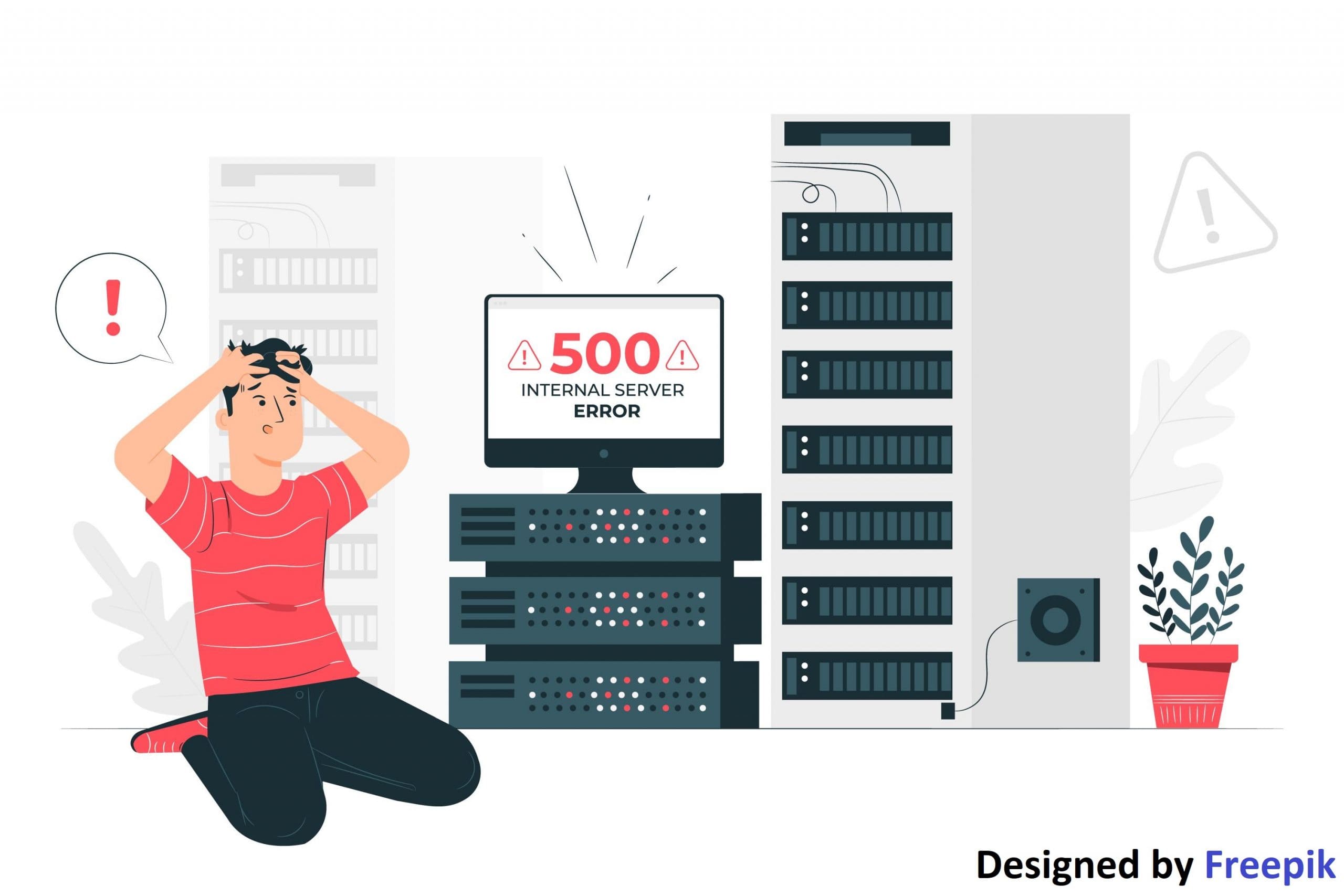
Worst Hosting Experiences
To help you all, we have rounded up all the bad practices you might encounter when dealing with hosting companies.
Downtime
One of the most frustrating things for website owners is when their site experiences downtime. Various factors, including server issues, maintenance, or unexpected problems, can cause this. Unfortunately, some WordPress hosting providers have a reputation for frequent downtime, leaving website owners needing access to their sites.
Slow loading times
Website loading times are essential for user experience and search engine optimization. Slow loading times can cause users to become impatient and leave the site, hurting engagement and conversion rates. Unfortunately, some WordPress hosting providers have slow servers, leading to slow website loading times.
Poor customer service
When something goes wrong with a website, it's crucial to have access to good customer service. However, some WordPress hosting providers need better customer service, which can be frustrating for website owners who need help with technical issues or other problems.
Security issues
WordPress websites are vulnerable to security breaches, such as hacking and malware infections. Hosting providers can help protect websites from these threats, but if a hosting provider is not secure, it can increase the risk of security issues. Unfortunately, some WordPress hosting providers have a reputation for poor security, which can put websites at risk.
Hidden fees
Some WordPress hosting providers advertise low prices but add hidden fees, making the final cost much higher than expected, which can be frustrating for website owners on a budget and make it difficult to predict the cost of hosting a WordPress site.
Trusting a company to host your site is a big decision, so everyone takes the time to research first. Check out the reviews as much as you have time. Get in touch with people who have direct experience with the company. Do whatever it takes until you finally decide on the company. You can always make the most of whatever hosting service you get, but having more pros than cons is better.
Resource:
https://wpmayor.com/worst-web-hosting-practices/
Disclaimer: Wherever any material is quoted as sourced from the published text with publishing rights vested in an individual, it is stated that it is a pure quotation and has no intention to claim it as our own.
Image Source: www.freepik.com
194 adminApril 19, 2023

DIY SMM Strategies For Your Chicagoland Small Business
Small businesses owner can't just throw money at a problem and hope for the best. It would be best if you were smart about using social media to reach your target audience.
Social media can be a reliable tool to promote your Chicagoland Small Business.
(SMM) is essential for Chicagoland small businesses because it allows them to reach a wider audience, build brand awareness, and cost-effectively engage with customers.
Here are DIY SMM strategies for your Chicagoland Small Business:
1. Choose the right platforms: Pick the social media platform that is most relevant to your target audience and where you feel most comfortable posting. TikTok, Instagram, Facebook, Twitter, Snapchat, LinkedIn, and Pinterest are social media platforms. Pick the best platform according to your audience base.
2. Effective Content Marketing Strategy: Quality is essential, and content is no exception. Content marketing has been the dominant form of marketing for a long time and probably will be for some time. Many brands need to combine quality content with a proper posting schedule and proper frequency of posts. Create a hashtag strategy relevant to your optimized and complete content.
3. Stay up-to-date on trends: There is a new trend every day on social media. One of the good things you can do for your Chicagoland Business stays in tune with what's happening in the digital world. Read blogs, books, and publications about new technologies and innovations relevant to your Company. So staying up-to-date on social media is necessary.
4. Collaboration with other professions or influencers: Collaborating with other businesses, companies, or influencers can be an excellent way to leverage each other's followers and increase exposure for both parties.
5. Paid Advertising: Social media advertising is an Economical way to drive traffic and increase your business's conversions. Facebook, Instagram, and Twitter ads are great ways to reach audiences who might not see your content. Targeting based on location, interests, geographies, and more allows you to get the people most likely interested in your offer!
In conclusion, one of the best ways to keep your Company alive is to use social media for marketing. Posting on Facebook, Instagram, and Twitter can help you stay clear and fresh in the minds of potential customers. You should also use other platforms like YouTube, LinkedIn, or Google+ if they suit your Company's needs.
Resource:
https://www.entrepreneur.com/growing-a-business/9-ways-to-grow-your-small-business-through-social-media/439805
https://www.shopify.com/blog/social-media-small-businesses
Disclaimer: Wherever any material is quoted as sourced from the published text with publishing rights vested in an individual, it is stated that it is a pure quotation and has no intention to claim it as our own.
Image Source: www.freepik.com
181 adminApril 13, 2023

How much time should I spend as a CEO of a small agency in getting new business from old clients?
According to the Harvard Business Review, most business owners spend a small portion of their time with their customers. As little as 3% of their working hours. This means there are many weeks when business owners only spend a couple of hours with the people who are the essential part of their business.
This raises an important question. How much time should I spend as a CEO of a small agency in getting new business from old clients?
First, it is crucial to maintain a good relationship with your old customers. This means staying in touch with them, understanding their needs, and providing excellent customer service. This can help you retain their business and generate new business through referrals.
In actively seeking new business from old clients, you should dedicate a certain amount of time each week or month to this task. This could include reaching out to them with new offers or promotions, providing updates on your services, or simply checking in to see how they're doing.
It is also essential to balance your efforts between seeking new business from old clients and acquiring new clients. While your old clients can be a valuable source of business, it's crucial to keep expanding your client base to ensure your agency's long-term growth.
Staying in touch with old clients is extremely important. Your communication doesn't have to be frequent or profound, but these relationships need maintenance to stay alive.
Resource:
https://www.morefloods.com/how-much-time-should-small-business-owners-spend-with-customers/
https://customerthink.com/how-much-time-should-ceos-spend-with-customers/
Disclaimer: Wherever any material is quoted as sourced from the published text with publishing rights vested in an individual, it is stated that it is a pure quotation and has no intention to claim it as our own.
Image Source: www.freepik.com
181 adminApril 5, 2023

Top 5 Designing Best Practices
Whether you are designing a website, a logo, or an entire brand identity, it is essential to follow some best practices to ensure that your designs are practical, functional, and aesthetically pleasing.
Here are the top 5 design best practices that you should follow when creating your initial designs:
1. Understand the Audience: Before starting any design project, it is essential to understand the design's purpose and the intended audience. It should not be underestimated or rushed. Time and budget are always essential considerations in product design. With these, the product will be shipped. While that's important to the process, keeping sight of who uses the product, their customer journey, and whether they're desktop or mobile users is essential.
2. Define user objectives: Get into the mindset of a new end user. What do they want to achieve? How will the application help them? List and refer to our goals throughout the UI or UX design process. Conduct in-depth research to gain insight into your target audience's demographics, interests, and preferences. This information will help you create a design that will reverberate with your audience and achieve the desired results.
3. Consistent action in the application: Everyone loves when an application is user-friendly. It avoids headaches, saves time, and helps users achieve their goals by eliminating confusion — all requirements for creating satisfied customers. Consistent actions eliminate the need for user search and thus make their workflow run more smoothly. If an Audience knows how to use functionality in one section, they know how to use it in all areas.
4. Design patterns for product UI/UX design consistency: A successful and consistent UI means a user can perform tasks with a minimal number of actions. If a four-step job can quickly be completed in two, the UI should constantly be optimized for shorter workflows. UI patterns can benefit from this… after all, this functionality is why they became patterns in the first place.
5. Consistent Communication: Search results, form submission messages, error windows — every interaction with your user is a conversation. For an app/website to be successful, it must talk to the user and inform them of what is happening.
Resource:
https://www.uxpin.com/studio/blog/guide-design-consistency-best-practices-ui-ux-designers/
Disclaimer: Wherever any material is quoted as sourced from the published text with publishing rights vested in an individual, it is stated that it is a pure quotation and has no intention to claim it as our own.
Image Source: www.freepik.com
177 adminApril 4, 2023

Do You Have A Testing Process?
Software Testing checks that software or application does what it is supposed to do. The advantages of testing include avoiding defects, reducing development costs, and improving the performance of your software.
Why is Software Testing Necessary?
Software testing is an essential aspect of the software development life process. It involves verifying and validating the functionality, performance, and security of a software application or system to ensure that it qualifies the requirements and specifications of the intended user.
What is the Importance of Testing?
Let's look at the benefits of software testing in the software development life cycle:
Testing should be started in the early stages of the SDLC (Software Development Lifecycle), if testing is not done in the early stages, then the cost of defect resolution is high, and defects are found in the later stages.
In today's competitive market, only a quality product survives for a long time, so application testing is essential in the SDLC to ensure they produce a good quality product.
Testing is essential as its software application cannot be debugged.
The most important thing about testing is that the development environment is different from the test environment, and the testing done in the test environment is similar to the production environment.
Risks of Not Doing Software Testing:
Here are some common pitfalls of not correctly testing software before deployment.
Excessive Expenses:
Fixing software bugs requires immediate attention. This process is easy during pre-launch testing with software development.
An important consideration is the cost of eliminating defects or defects associated with improper software testing. These costs include long work hours, lost productivity, and lost profits during software downtime.
Delayed Product Launches:
For a product to be launched quickly without any error, it must be tested throughout the development process or before it goes to market. While in-house software testing can help catch many bugs before product launch, without third-party software testing, many defects risk detection until it's too late.
Dissatisfied Users:
Software users have certain presuppositions about their products; they expect Software to run fast, work correctly, and protect their private info. If software bugs hamper them from having a positive user experience, they will churn and probably not return.
Finally, it is crucial to have a testing process to ensure the quality and reliability of software products. A well-designed testing process can help identify and fix defects and problems early in the development cycle, saving time and resources in the long run. Implementing a testing process can also improve customer satisfaction and product confidence.
Resource:
https://www.ibm.com/in-en/topics/software-testing
https://www.tutorialspoint.com/software_testing/software_testing_quick_guide.htm#:~:text=Testing%20is%20the%20process%20of,contrary%20to%20the%20actual%20requirements.
https://www.softwaretestingclass.com/importance-of-testing/
https://www.ibeta.com/risks-of-not-testing-software-properly/
Disclaimer: Wherever any material is quoted as sourced from the published text with publishing rights vested in an individual, it is stated that it is a pure quotation and has no intention to claim it as our own.
Image Source: www.freepik.com
180 adminMarch 31, 2023

How Much Time Should I Spend AS A CEO of A Small Agency In Getting New Business From New Clients
As a CEO of a small agency, you should spend a significant amount of time on new business development, including at least 20-30% of your time on sales and marketing activities. This time must include attending networking events, reaching out to potential clients, creating proposals, and nurturing leads. As your agency grows, you may be able to dedicate less time to new business development, but it should always be a priority.
While starting first, you may need to spend even more time on new business development. In the early stages of your agency, you need to build a solid client base to establish your reputation and generate revenue; this may mean dedicating 50% or more of your time to sales and marketing activities.
It's also important to consider your goals when determining how much time to spend on new business development. You may need more time on sales and marketing activities if you have aggressive growth targets. On the other hand, if you are happy with slow and steady growth, you can spend less time on new business development and focus more on servicing your existing clients.
One crucial factor to consider is the size of your agency. If you are a one-person shop, you will need to spend more time on new business development than if you have a team of employees. As your agency grows, you can delegate sales and marketing activities to your team, freeing up your time to focus on other business areas.
In summary, as a CEO of a small agency, you should be spending a significant amount of time on new business development, depending on several factors, including the size of your agency, the stage of your business, and your goals.
Resource:
https://www.morefloods.com/how-much-time-should-small-business-owners-spend-with-customers/
https://www.searchenginejournal.com/get-new-clients/216661/
Disclaimer: Wherever any material is quoted as sourced from the published text with publishing rights vested in an individual, it is stated that it is a pure quotation and has no intention to claim it as our own.
Image Source: www.freepik.com
177 adminMarch 16, 2023

Your Best Friends To Help Scale Up Your Agency
Your Clients: Client Relationships Are the Heart of your Business. Your clients are your most important asset. Building solid relationships with your clients and providing exceptional service will help you retain and attract new ones. Be sure to listen to their needs, communicate regularly, and go above and beyond to exceed their expectations.
Employees: Your employees are the backbone of your agency. Hiring and retaining talented and passionate employees who share your vision is critical to success. Create a positive and supportive work environment, provide opportunities for professional development, and recognize and reward employee contributions. Considering your employee as a friend can help to build growth, enhance engagement, and make the workplace more productive.
Technology: Technology gives you unlimited access to information. The Internet opens up every one of the details that can help you succeed in your business. Technology can help you streamline processes, automate tasks, and improve efficiency. Choose the right tools and platforms to help you manage projects, communicate with clients, track progress, and analyze data.
Networking: Networking is about collaborating and engaging with people for mutual benefit. Building a solid network of contacts and partners can help you expand your reach and gain new opportunities. Attend industry events, join relevant associations, and collaborate with other agencies and professionals to build your network.
Mentor: Mentorship is a mutually favorable professional relationship in which an experienced person (mentor) imparts knowledge, skills, and wisdom. A mentor or advisor can provide valuable insight, guidance, and support. Look for mentors who have experience in your industry and can offer advice on growing your agency.
In Conclusion:
Growing your agency requires hard work, dedication, and a robust support system. Build strong relationships with your clients, employees, and network, leverage technology, and seek guidance from mentors to help you achieve your goals. You can take your agency to the next level with the right friends.
Resource:
https://www.business.com/articles/8-tips-for-scaling-your-business/
https://99designs.com/blog/marketing-advertising/start-digital-marketing-agency/
Disclaimer: Wherever any material is quoted as sourced from the published text with publishing rights vested in an individual, it is stated that it is a pure quotation and has no intention to claim it as our own.
Image Source: www.freepik.com
167 adminFebruary 21, 2023

Usually, Pain Points While Scaling A Small Digital Agency
Every agency owner wants to work with the biggest clients, build the most prominent team, win the most significant awards, and land the biggest procurement deals.
Unfortunately, the path to sustainable growth is lined with potential pitfalls that threaten your ability to scale and your agency's entire operation.
After reading this blog post, you can find solutions to what is holding your agency back and power through those pain points.
1. You Scale Beyond Your Skills: Your clients refer you to others as you complete projects. These new clients refer you to others; in theory, the whole process snowballs until you're working with the top names in your vertical. Before saying yes, to a big project, take a closer look at what is required to execute the project. Do you need to bring in other talents? Can you partner with another agency that specializes in a new area? It's better to turn down an opportunity you don't deserve — no matter how good it sounds — than to accept it and blow away your carefully crafted brand reputation.
2. Your system is not scalable: Measuring services as an agency is complex. Because it requires a lot of manual effort and skill, you will always need help if you want to scale, but your systems and processes still require significant manual effort. Take the time to get your house in order with more scalable solutions before investing heavily in growth.
3. You Don’t Give Your Past Clients A Graceful Exit: As your agency grows, your service offerings are likely to change. Your price points will vary. How you build your packages will change for the new, possibly more significant, customers you're targeting. As a result, you may have clients on your roster who are not a good fit for your changing agency.
Here's what you don't want to do: keep them limping along with your agency because you're too afraid to tell them your growth means you're not a good fit for their needs.
Growth may be the holy grail of most agencies, but it can be a double-edged sword. By planning to avoid the pitfalls described above, you can improve your agency's ability to scale without compromising performance or integrity.
Resource:
https://www.forbes.com/sites/forbesagencycouncil/2020/01/21/four-pitfalls-most-digital-marketing-agencies-encounter-when-scaling/?sh=46e1105f3440
https://www.autogrow.co/agency-growth-secrets/
https://www.searchenginejournal.com/scale-small-agency-brand/306157/#close
Disclaimer: Wherever any material is quoted as sourced from the published text with publishing rights vested in an individual, it is stated that it is a pure quotation and has no intention to claim it as our own.
Image Source: www.freepik.com
238 adminFebruary 20, 2023

Firing Your Worst Agency Clients
When you ignore bad client behavior, you are sending a clear message to your team - that revenue from one client is more important than the happiness of your employees. You are creating a vast employee retention risk.
Let's see how to decide and then how to proceed.
How do you decide to Fire your worst agency clients?
Here are some of the problems you might face with your worst agency clients:
Broken client communications: You work on client projects but need more support or interest from them.
Unrealistic demands: This is a common situation. Some clients need to pay more attention to the original scope of work. They become aggressive to get their way.
They threaten you and your employees, Block payments.
No project support: You find yourself running in circles with this client. They veto all your ideas. But they never provide insight to move the project forward. Poor anger management: Misbehaviour with you or your team member, bad temper attitude, None of these make a great client. Late payments: No one likes constantly chasing invoices. Not to mention struggling with cash flow as a result. Although you can often overcome this challenge, some clients need better payers. And sometimes, it might make more sense to replace them.
Firing a Client While Practicing Warmth & Competence:
Once you've decided that firing the worst agency client is correct, you want it to go as smoothly as possible, follow these steps:
Pick up the phone: Don't dismiss agency clients via email—a call conveys warmth and is more personal than an email.
Consider transit time: Ideally, give at least 30 days' notice so the customer is safe.
Send a recap email: Reiterating what you discussed on the call. Remember to include the next step. Unless the client is unethical or abusive, we recommend helping them find a new agency. At the very least, this includes offering them some names to contact.
Stand firm: Once you decide to fire a client for a reason, stick to the decision. Flip-flopping shows your team that you lack courage—and that's not good for employee retention.
Conclusion:
Firing a client takes work. Such a business decision can carry heavy emotional weight. But at the same time, toxic customer relationships can affect your agency's growth. Good luck!
Resource:
https://sakasandcompany.com/how-to-fire-bad-clients/
https://agencyanalytics.com/blog/how-to-fire-client
Disclaimer: Wherever any material is quoted as sourced from the published text with publishing rights vested in an individual, it is stated that it is a pure quotation and has no intention to claim it as our own.
Image Source: www.freepik.com
167 adminFebruary 17, 2023
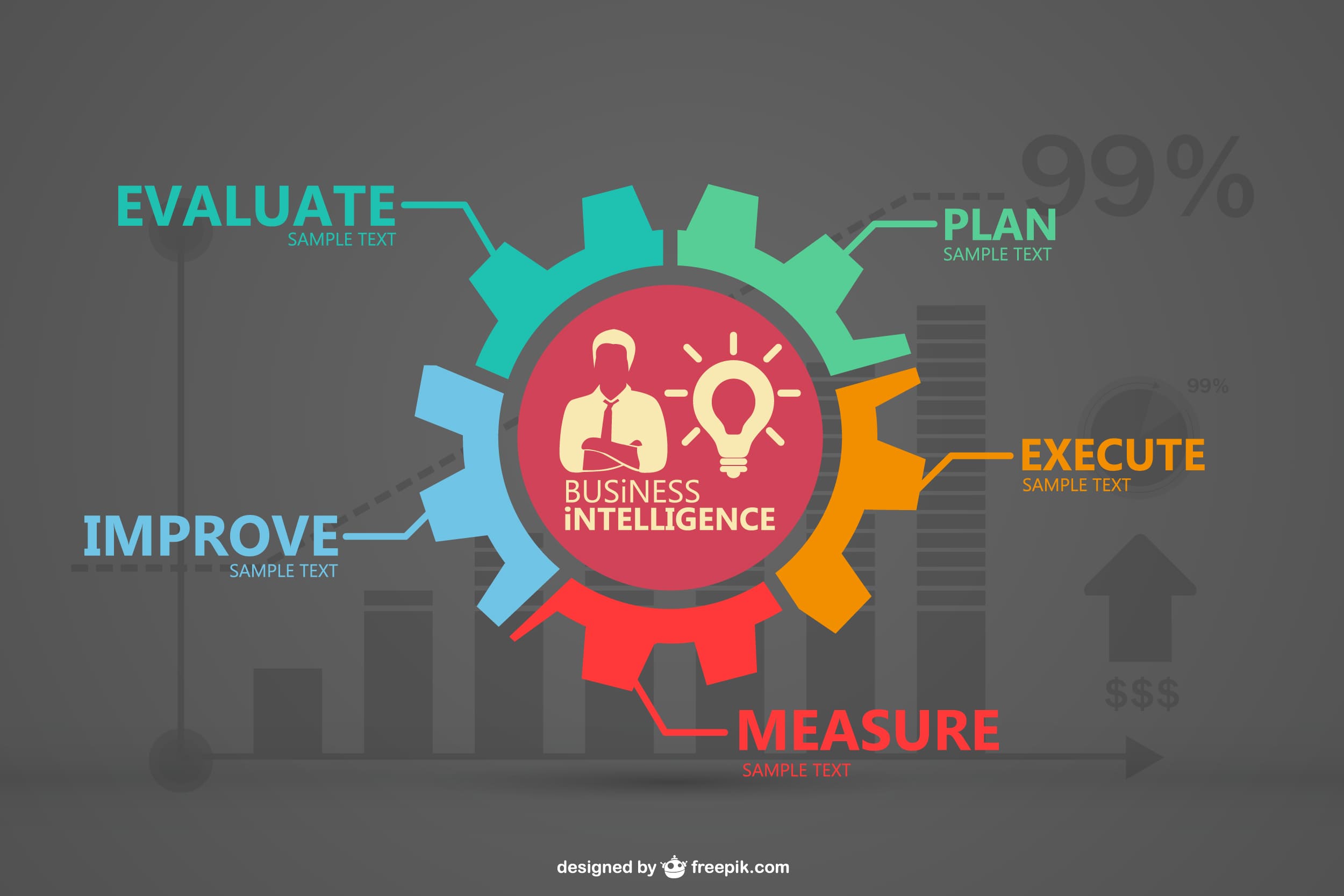
5 Sales Transformation Tools For Your Chicago-Based Small Business
Many free and paid sales tools are launched in the market every day. Here are the top 5 sales tools that are useful for small businesses.
1. Content Management: When selling, you need content to attract an audience — your sales and marketing teams will work together to create this content for your site. It would help if you run campaigns, create videos, blog posts, and more. These tools will help your team.
Top content management tools include:
• Allbound
• Brainshark
• Consensus
2. Sales Enablement: Sales enablement provides your entire sales force with everything they need to close a deal.
Popular sales enablement tools include:
• Seismic
• Highspot
3. Customer Relationship Management (CRM): Software for CRM lets you better manage the relationship with your customers. You can improve existing customer relationships by driving sales and marketing communications.
Some options to consider include the following:
• Salesforce
• Pipedrive
• Nutshell
4. Sales Automation: Sales automation tools cover a vast online marketing field. You can automate many processes with this software. Automation in sales includes sending emails, personalizing interactions with customers, scheduling, data entry, and many more.
Sales automation tools include:
• RollWorks
• Winmo
5. Sales analytics: Analytics is a significant factor in understanding whether your business is growing or declining. Sales analytics tools allow you to track and manage how your sales process is performing. Sales analytics tools enable you to see individual parts of your sales process to see what's working and areas for improvement.
Some sales analytics tool choices are:
• Looker Sales Analytics
• Insight Squared
Resource:
https://www.webfx.com/blog/marketing/sales-tools/
https://www.highspot.com/sales-enablement/best-sales-enablement-tools-and-software/
https://salesmateio.medium.com/9-best-sales-tools-for-small-businesses-f47389641532
Disclaimer: Wherever any material is quoted as sourced from the published text with publishing rights vested in an individual, it is stated that it is a pure quotation and has no intention to claim it as our own.
Image Source: www.freepik.com
202 adminFebruary 16, 2023

Digital Transformation And Its Benefits
According to sources, digital transformation is about creating a digital enterprise. This company uses technology to continuously improve all parts of its business models (what it offers, how it interacts with consumers, and functions." There is no need for small enterprises to start to set up their business procedures and then transform them later. You can future-proof your company from the start. Building a 21st-century firm on sticky notes and handwritten ledgers is not feasible. Digital thinking, planning, and building positions you to be agile, versatile, and ready to develop.
The Main Drivers of Digital Transformation
Many businesses prioritize digital transformation, but it is critical to understand the causes driving the need for digital change. The ability of technology to swiftly collect, create, analyze, and send data is the primary driving force behind digital transformation. Artificial intelligence (AI), cloud computing, mobile technologies, social media platforms, and next-generation technologies such as the internet of things (IoT), edge computing, and robotic process automation (RPA) have transformed how quickly we obtain information.
Implementing these technologies in the marketplace by digital titans such as Amazon, Airbnb, Uber, and others has altered the types of products and services that customers expect. Consumers, for example, want businesses to respond fast and provide products and services that are suited to their specific demands. They have also learned to anticipate intuitive, simple interfaces, and they prefer digital interactions that can occur at any time and from any device.
Importance of Digital Transformation
The overall goal of any digital transformation is to better your current operations. Companies must remain competitive in their industries, which necessitates digital transformation. No evolution, no promotion.
According to sources, "just 8% of worldwide organizations have achieved their planned business outcomes from their digital technology investments." One technique that distinguishes leaders is investing more in transforming their businesses rather than just running them. Most organizations amass mounds of client data, but the true benefit comes from utilizing this data for analysis leading to the company's growth. Digital transformation offers a process for acquiring the relevant data and completely using it for higher-level business insight. It enables various functional divisions within an organization to translate raw data into insights across several touchpoints.
Examples of Digital Transformation:
Digital transformation can take many shapes, but it typically falls into one or more categories: digitizing the customer experience, creating new market opportunities, enabling innovation, and boosting operational efficiency.
There are numerous examples of corporate success with digital transformation. Let's take a look at some of them:
Nespresso - Nespresso, a manufacturer of specialty coffee machines and an operating subsidiary of the Swiss-based Nestlé Group, implemented a cloud-based CRM system that provided customers with omnichannel access to purchasing and customer care. Customers can contact the company via the internet, mobile device, or in-store visits. Having a 360-degree view of each of its customers has enabled Nespresso to expand into new regions and increase sales.
Netflix - Netflix began as a mail-based digital video disc (DVD) rental service in 1997. It has remade itself as an online video streaming service that provides personalized choices depending on each customer's tastes.
Desktop Metal – Desktop Metal is reshaping the manufacturing landscape with unique digital technology for 3D-printed metal. Automobile manufacturers have already made significant investments in this new technology. Aside from automotive uses, there are further applications in the medical, dentistry, aerospace, and luxury markets.
Benefits of Digital Transformation:
Time and Cost Reduction: The improved productivity in labor leads to significant savings in time and costs in all company departments.
Geographical Border Expansion: Digitization helps companies internationalize their product or services. It generates essential benefits such as increased turnover, reduced risk, and increased competitiveness.
Analytics: Digitalization work helps a company to combine all the customer data in one place due to excellent business insight. So, the company can make correct decisions at the right time.
Extends the Life of the Company: The use of new technology and some specialized software helps the company keep up to date.
Increased Revenue: With the help of digital transformation, many companies can generate more ROI.
Resource:
https://www.techtarget.com/searchcio/definition/digital-transformation
https://enterprisersproject.com/what-is-digital-transformation
https://whatfix.com/digital-transformation/
https://terakeet.com/blog/digital-transformation-examples/
Disclaimer:
Wherever any material is quoted as sourced from the published text with publishing rights vested in an individual, it is stated that it is a pure quotation and has no intention to claim it as our own.
Image Source: www.freepik.com
163 adminJune 6, 2022
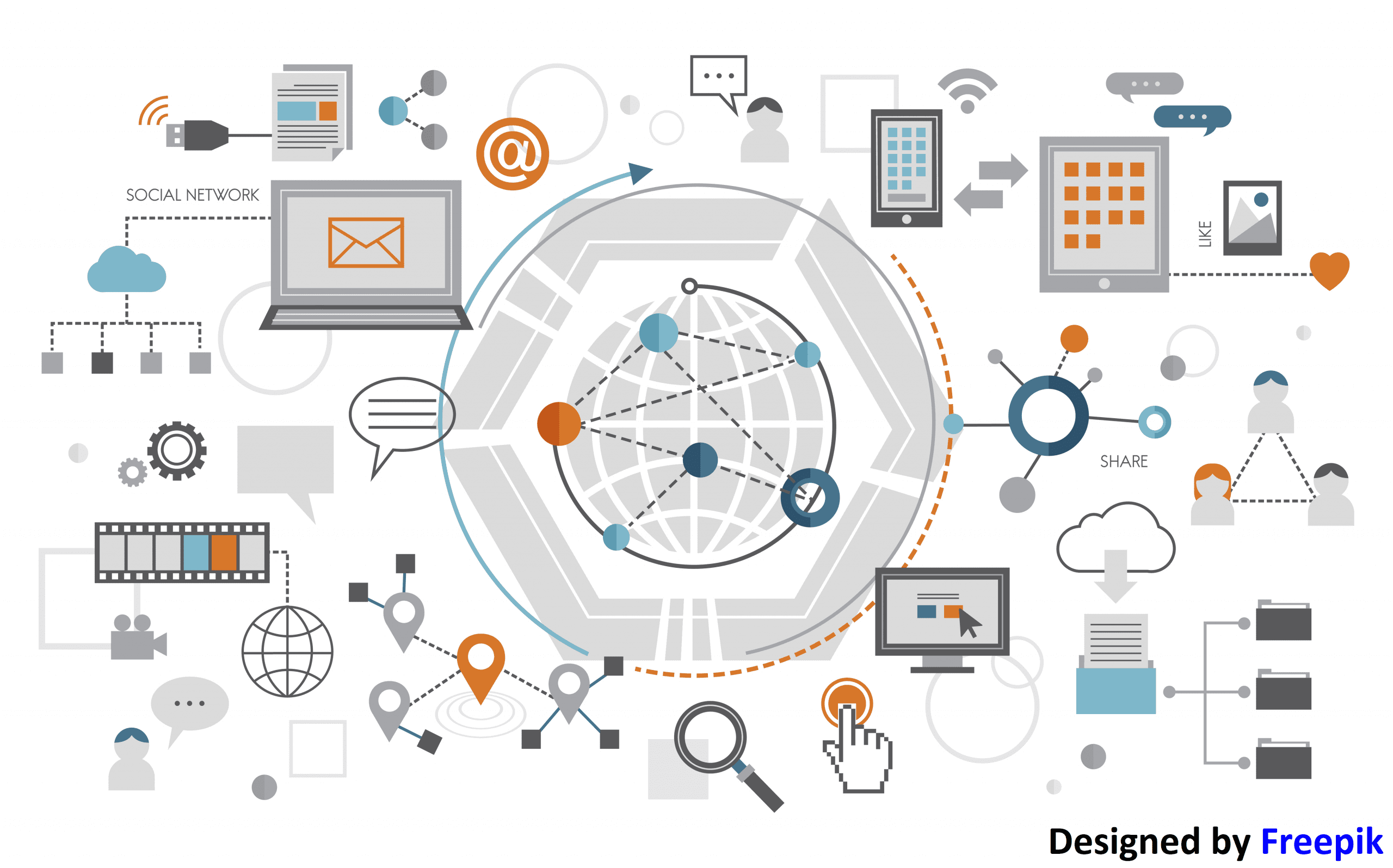
The Benefit of Digital Transformation
Digital transformation is a action by which companies or organizations can organize their strategies and improve their working methods for obtaining more significant benefits.
Adopting digital technology by a company improves efficiency, value, or innovation. It can bring benefits to the business.
As internet usage has increased since the 1990s, digitization has also increased.
The covid-19 pandemic opened up new opportunities for digital technologies.
Consumer digitizes much faster than businesses. That is why digitally transformed companies obtain more benefits than companies that use the traditional business model.
Here are some benefits of digital transformation your enterprise can expect:
1] Time and cost reduction:
The improved labor productivity leads to significant savings in time and costs in all company departments.
2] Expansion of geographical border:
With the help of digitization, the company can internationalize the product or their services and generate essential benefits such as increased turnover, reduced risk increased competitiveness.
3] Analytics:
Digitalization work help company to combine all the customer data in one place due to very good business insight. So, the company can make correct decisions at the right time.
4] Extends the life of the company :
The use of new technology and some specialized software helps the company keep up to date.
5] Increased revenue:
With the help of digital transformation, many companies can generate more ROI.
Resource:
https://www.techtarget.com/searchcio/tip/Top-10-digital-transformation-benefits-for-business
https://www.auraquantic.com/digital-transformation-8-benefits-of-digitizing-your-company/
https://en.wikipedia.org/wiki/Digital_transformation
Disclaimer:
Wherever any material is quoted as sourced from the published text with publishing rights vested in an individual, it is stated that it is a pure quotation and has no intention to claim it as our own.
Image Source: www.freepik.com
226 adminFebruary 9, 2022
Get a Quote
Starting a project is just a few steps away...